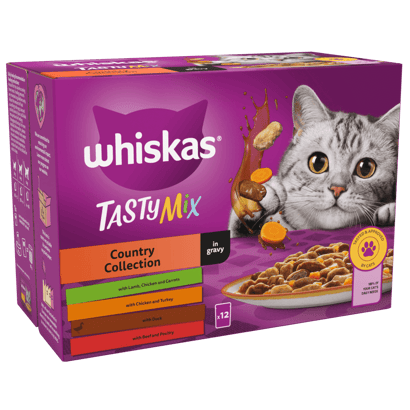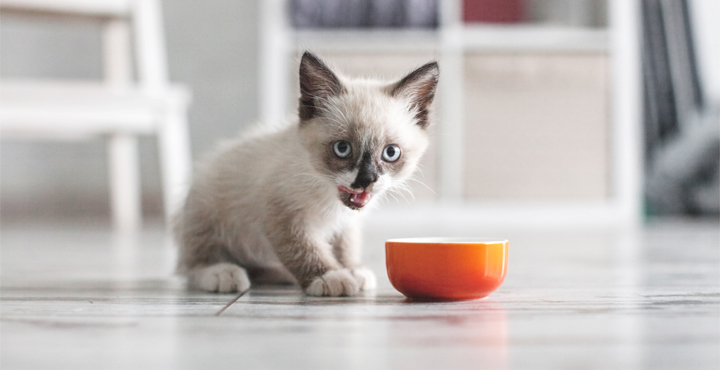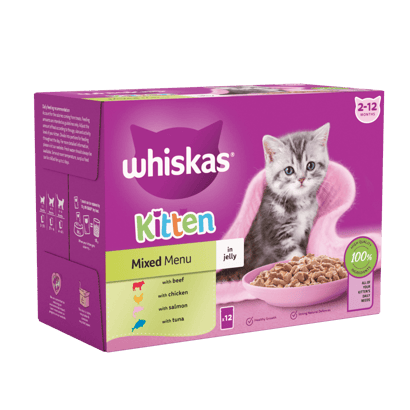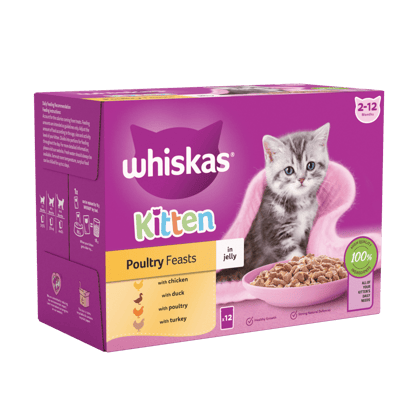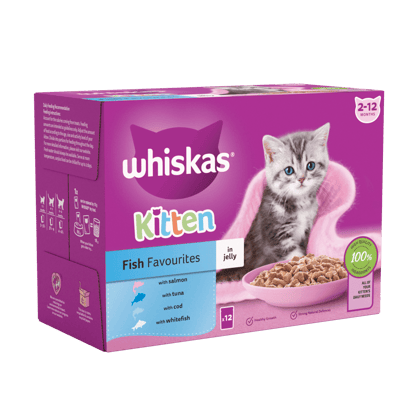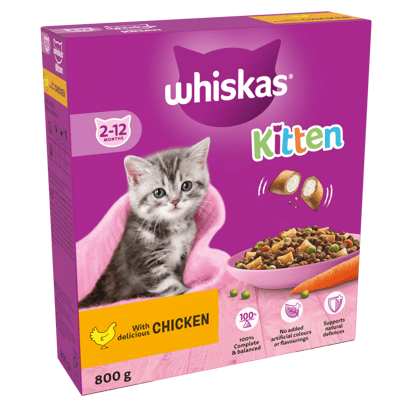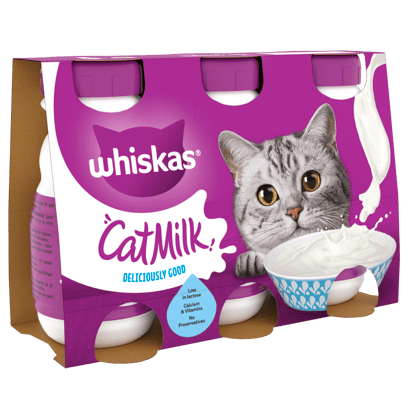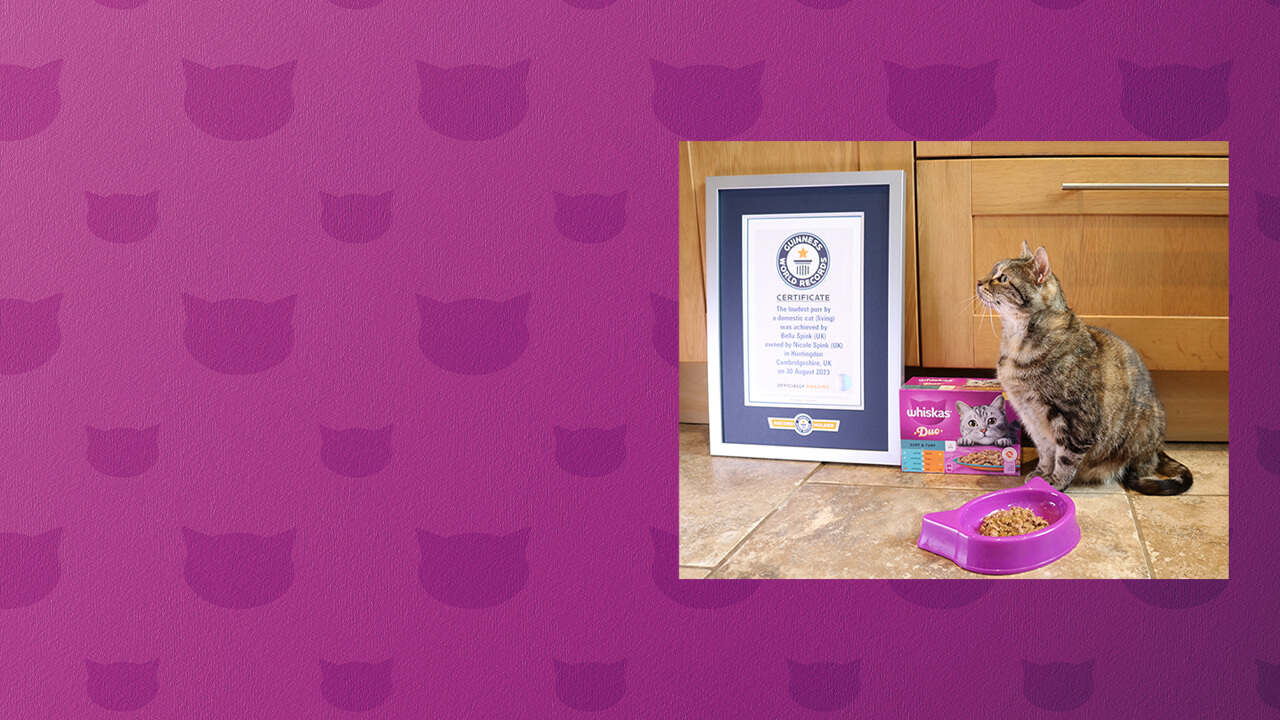
In the wild, big cats know exactly what they need to eat. By feeding your kitten the right food at the right times, you’ll be supporting their natural instincts as a carnivore and solitary hunter.
Special kitten food
For the first 4–5 weeks of their life, your kitten will get all they need from their mother. They'll normally be weaned by 7 weeks, but even from week 4 you can get them used to eating a specially prepared food like Whiskas® Kitten Pouch.
Small tummy, big appetite
Your cute kitten might be small, but they're going to grow 15 times faster than a human baby! However, with a stomach that starts out the size of your thumbnail, they can't eat very much in one go. That's why it's important to feed your kitten small meals at regular intervals – up to 6 times a day to begin with. In the early days, try spreading the food on to a plate so they can just lick and get a taste for it.
Kitten to cat portions
Whiskas Kitten Pouches are perfect for a single tasty meal for kitten from 4 months onwards. You should feed your kitten 3–4 meals a day until they are 6 months old. Following this you can feed them between 2-4 meals a day. Kittens can eat Whiskas® adult cat food when they are between 10-12 months old which they can have twice a day.
Careful eaters
In the wild, big cats are careful eaters, avoiding anything that tastes “off”. Your kitten shares those instincts, and will prefer every meal to be fresh, served at room temperature in a clean bowl.
Changing food
Introduce any new food very gradually and a little at a time, as sudden changes might upset your kitten’s sensitive tummy.
Not on the menu
After kittens are weaned, they lose their ability to digest milk – so no cow's milk! Many human foods can be harmful to cats – for example, onions can cause anaemia. So don’t be tempted to give them table scraps and human treats. If you're feeding them the right food at the right times, then they'll be getting all the nutrition they need.
Water
Your kitten has a super-sensitive nose and tongue that will easily pick up unfamiliar chemical smells. That’s why they might prefer drinking from puddles (or even the toilet!) rather than their water bowl. To encourage your kitten to drink more, place their water bowl in a quiet spot away from their litter tray. But if their strange drinking habits continue, don’t worry – it’s perfectly normal!
Litter tray
In the wild, big cats are careful about keeping clean. That’s why they don’t eat and go to the toilet in the same place. Your little kitten is no different, so make sure you keep their litter tray well away from the places where they eat and drink. To find out more please read Litter Tray Training.
A long and healthy life
A shiny coat, bright eyes and supple muscle tone are all good signs your kitten is nutritionally healthy. If you feed them a balanced food that's right for every stage of their life, you'll soon see it reflected in their appearance.
Your cute kitten might be small, but they're going to grow 15 times faster than a human baby!
For the first 4–5 weeks of their life, your kitten will get all they need from their mother. They'll normally be weaned by 7 weeks, but even from week 4 you can get them used to eating a specially prepared food like Whiskas® Kitten Pouch.

